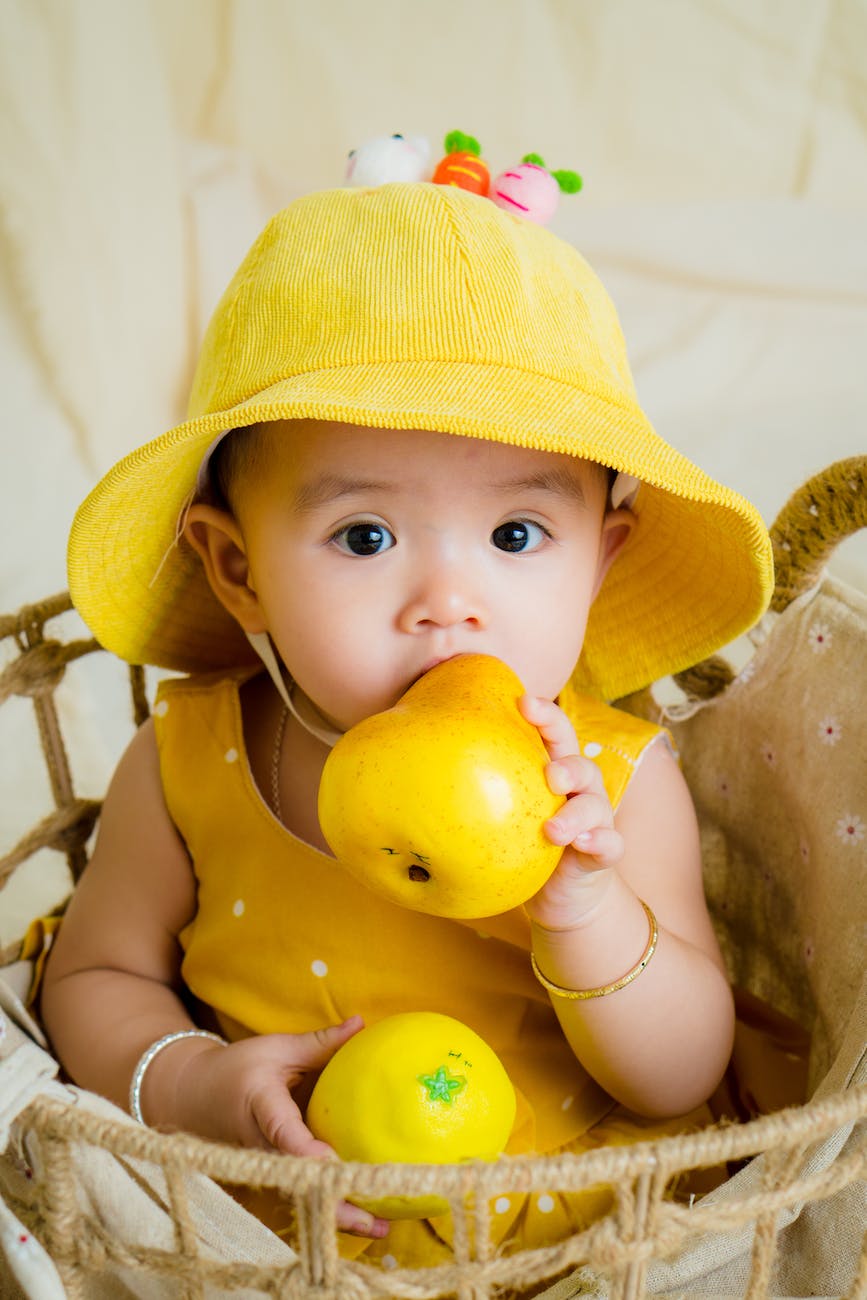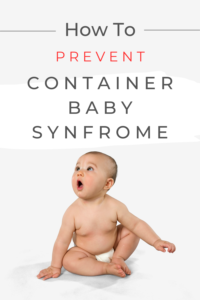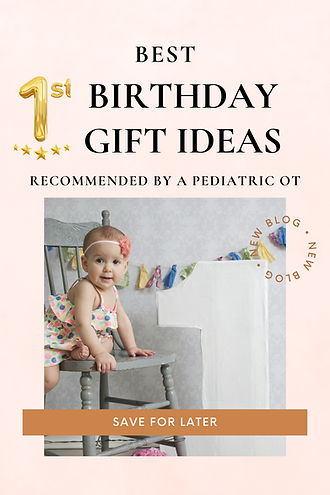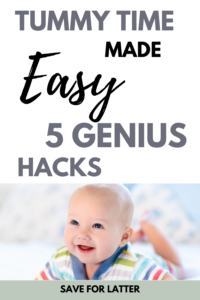
Essential Tips to Prevent Container Baby Syndrome
Did you know our increasingly busy lifestyle and certain modern baby products are hindering your child’s development? Not many do.
It’s time to raise awareness about Container Baby Syndrome and how it’s delaying our child’s natural growth.
Discover how we can combat this through strategic parenting techniques, engaging activities, and healthier lifestyle habits. It’s time to set our babies free and let them thrive.

As a parent, you want nothing more than to see your baby thrive and reach their full potential. You may be excited by all of the fancy new products for babies. But did you know that there’s a lesser-known threat that could hinder their development?
It’s called container baby syndrome, and it has become more prevalent recently due to our increasingly busy lifestyle and the development of products that are designed to make life easier but, in fact, are delaying our babies’ natural development.
Hi! My name is Marra, and I am a pediatric occupational therapist and a mom of a sweet toddler. I’ve spent years working with young children with a variety of developmental needs and supporting their parents with navigating child development.
The first few years of a child’s life are important and shape their future in many ways. The brain changes more in the first 5 years of life than in the next 95 years. This is why I loved working in early intervention with children ages birth to three years old.
The little ones I treated in therapy progressed so quickly and were able to make incredible gains. If your child needs it, I highly recommend starting therapy as early as possible.
If you have a little one at home and have any questions or concerns about their development, please comment below, and I’d love to help.
This post is all about container baby syndrome, what it is, and strategies you can use to prevent it and help promote developmental skills for your child.

What Is Container Baby Syndrome?
One thing that is really important to understand about early child development is that babies need to MOVE! Like, a lot!
Babies need a lot of free movement. It’s easy to think that babies have it easy and all they do is sleep, play, eat, and poop, but in fact, we couldn’t be more wrong.
Babies work really hard, some babies work harder than others. Developmental skills such as learning to roll over, sit up, scoot, crawl, walk, and feeding are really challenging.
These skills do not just happen naturally. They take a lot of strength and practice, just like any new skill.
We need to give our babies opportunities to move freely so they can increase their strength and practice whatever new skills they are working on, in order to develop and master their next milestone.
Today, many little ones spend a significant amount of time confined to containers such as carriers, car seats, bucket seats, swings, bouncers, and strollers.
The amount of time babies spend engaging in free-movement play has been significantly decreasing in recent years, increasing the rate of container baby syndrome.
While these containers may seem convenient, they can actually impede your baby’s growth and development. Container baby syndrome is a term used to describe the physical, cognitive, and emotional delays that can result from prolonged confinement in these restrictive spaces.
I want to clarify that these products are not harming your child or dangerous, it is the lack of movement that is the cause of delay in container baby syndrome.
But fret not! In the following sections, we’ll lay out a comprehensive roadmap to help you create a nurturing and enriching environment for your baby.
From establishing a safe and stimulating play area to engaging in interactive conversations, each tip is designed to enhance your baby’s overall well-being and protect them from the risks of container baby syndrome.
Your baby’s development is greatly influenced by their environment and the interactions they experience. By implementing these essential tips, you can safeguard their growth and minimize the risks of container baby syndrome.
It’s time to empower yourself as a parent and ensure your baby’s future is filled with boundless possibilities. So, let’s dive into the tips that will create a nurturing space for your little one’s optimal development.
ESTABLISH A SAFE AND STIMULATING PLAY AREA
To foster your baby’s physical and cognitive development, it’s vital to establish a safe and stimulating play area. This dedicated space will provide them with the freedom to explore their bodies and develop their motor skills while also engaging their senses. Here are some guidelines to help you create an environment that supports your baby’s growth:
-
- Choose a designated area: Set aside a specific area in your home, on the floor, where your baby can play and explore. This could be a corner of the living room or a separate playroom. Make sure the space is free from clutter and potential hazards.
-
- Invest in age-appropriate toys: Select toys that are suitable for your baby’s age and developmental stage. Toys that stimulate their senses, such as soft rattles, textured balls, or colorful mobiles, can encourage their curiosity and cognitive growth.
-
- Provide a variety of sensory experiences: Include objects with different textures, sounds, and shapes to engage your baby’s senses. This could include soft blankets, musical instruments, or sensory play mats. These experiences will promote their sensory development and help them understand the world around them.
-
- Create a cozy and safe environment: Make sure the play area is comfortable and secure. Pad the floor with a soft mat or rug to cushion any falls. Install safety gates to prevent access to hazardous areas of your home, such as staircases or kitchens.
-
- Regularly rotate toys: Introduce new toys and activities on a regular basis to keep your baby engaged and curious. Rotating toys will provide novelty and prevent boredom while stimulating their cognitive and motor skills.
-
- Engage in interactive play: Take time to play with your baby and actively participate in their exploration. This not only strengthens your bond but also helps them learn through observation and imitation.
Creating a safe and stimulating play area is an essential part of nurturing your baby’s optimal development. By providing a space that encourages exploration and engagement, you are setting the foundation for their physical, cognitive, and emotional growth. So, get ready to watch your little one thrive in their own little world of play.

Encourage frequent tummy time to prevent container baby syndrome
One important way to promote your baby’s physical development and protect them from container baby syndrome is by encouraging frequent tummy time.
This simple activity has numerous benefits and can make a significant difference in your baby’s overall growth.
Tummy time refers to the practice of placing your baby on their stomach while they are awake and supervised.
By doing so, you are helping them strengthen their neck, shoulder, and back muscles, which are essential for supporting their growing bodies. This positioning also aids in preventing the development of flat spots on the back of your baby’s head.
During tummy time, babies have the opportunity to explore their surroundings from a different perspective. They can practice lifting their heads, reaching for toys, and even pushing themselves up onto their forearms. This not only builds their strength but also enhances their coordination and motor skills.
Engaging in tummy time sessions also helps to prevent the overuse of containers and promotes a healthy balance between being confined and having free movement.
By giving your baby the chance to stretch and move their bodies, you are encouraging healthy physical development and reducing the risk of container baby syndrome.
It’s important to make tummy time a regular part of your baby’s daily routine. Start with short sessions of just a few minutes, gradually increasing the duration as your baby becomes more comfortable.
Make it enjoyable by placing colorful toys or a small mirror in front of them to capture their attention and encourage reaching and grasping.
Always ensure that tummy time takes place on a safe, flat surface and never leave your baby unattended. As they gain strength and confidence, you will witness their progress and the positive impact tummy time has on their development.
In you would like more tips and hacks to help make your baby’s tummy time a little easier, check out Tummy Time Made Easy: 5 Genius Hacks to learn more.
By incorporating regular tummy time into your baby’s routine, you not only provide them with valuable opportunities for physical growth but also set the stage for the upcoming section on limiting time spent in containers.,

lIMITING tIME sPENT IN cONTAINERS
t’s essential to recognize that while containers can be convenient and helpful in certain situations, excessive time spent in them can hinder your baby’s development and overall well-being.
Containers such as car seats, bucket seats, strollers, swings, and bouncers can restrict your baby’s movement and limit their opportunities for active exploration.
While it may be tempting to use these devices for extended periods, it’s crucial to prioritize giving your baby ample time outside of them.
I’m not saying never use these containers. I had a swing for my baby and I used itr but for briefs amount of times. She loved it so I saved it for when I needed it.
I used it when I was home alone with her all day and had to go to the bathroom or needed a shower. It did help to calm her during that awful witching hour period we went through.
Think of the 30-minute rule. Your baby should not be in a device more than 30 minutes a day and their time spent engaging in floor time play should at least double their time spent in containers.
I want to reiterate that the devices are not unsafe or harmful to your baby, but rather they do not provide them with an opportunity to get stronger and practice their skills in order to meet the next developmental milestone.
By limiting your baby’s time in containers and promoting active exploration, you provide them with valuable opportunities to develop their physical and cognitive abilities.
In the next section, we will explore further strategies to encourage your baby’s active exploration and ensure their healthy development.
eNGAGING IN INTERACTIVE AND RESPONSIVE CONVERSATIONS to prevent container baby syndrome
Engaging in active exploration provides your baby with valuable experiences that contribute to their physical and cognitive development.
It allows them to gain a better understanding of their surroundings and learn to navigate through different spaces confidently. By actively participating and encouraging their exploration, you are setting the stage for their healthy growth and development.
One way to actively engage with your baby is through interactive and responsive conversations. Just like how exploring their environment helps them learn about the world around them, engaging in conversations helps develop their language skills and cognitive abilities.
When you talk to your baby, they learn to recognize different sounds and patterns in speech, which lays the foundation for their own language development.
Engaging in interactive conversations with your baby also fosters social and emotional growth. Through these conversations, your baby learns the art of turn-taking, listening, and responding.
This back-and-forth exchange helps build their communication skills and enhances their ability to connect with others.
To engage in responsive conversations with your baby, be attentive and actively listen to their coos, babbling, and attempts at communication. Respond to their cues and gestures with enthusiasm and warmth.
Narrate their actions and surroundings, describing what they see, hear, and touch. Ask open-ended questions and encourage them to respond, even if it’s just with a smile or a babble. These interactions show your baby that their communication is valued and help them develop a sense of trust and security.

pROVIDE aDEQUATE pHYSICAL cONTACT AND aFFECTION to prevent container baby syndrome
To further enhance your baby’s development and promote a strong parent-child bond, it is essential to provide adequate physical contact and affection.
While engaging in responsive conversations and interactive playtime are crucial, the power of physical touch should not be underestimated.
Babies thrive on touch and affection, as it helps them feel safe, loved, and connected to their caregivers. Gentle caresses, hugs, cuddling, and skin-to-skin contact can have a profound impact on your baby’s emotional well-being and overall development.
The act of holding and comforting your baby not only provides them with a sense of security but also stimulates their senses and encourages healthy physical growth.
When you hold your baby close, your touch offers them vital sensory stimulation. They can feel the warmth of your body, the rhythm of your heartbeat, and the gentle vibrations of your voice as you speak or sing to them.
These physical sensations create a familiar and comforting environment for your little one, which can help regulate their mood and improve their sleep patterns.
In addition to the emotional and sensory benefits, physical contact also plays a crucial role in the development of your baby’s social skills.
By holding and interacting with your baby, you are reinforcing the bond between you and fostering trust and attachment. This attachment is the foundation for future relationships and influences their ability to form secure connections later in life.
To provide adequate physical contact and affection, make it a part of your daily routine. Incorporate intentional moments of closeness into activities such as feeding, diaper changes, or bedtime.
Use these opportunities to hold your baby, gaze into their eyes, and talk to them softly. Allow them to explore your face and hands, encouraging their curiosity and providing them with a multi-sensory experience.
Because your baby needs to be close to you and craves your affection, warmth, and love, carriers are not included in the “container” group.
Being close to you is so beneficial for your little ones, and when you wear your baby in a carrier, they get a variety of sensory movements and experiences that their nervous system has to respond to. This is a great way to get stuff done around the house that is more positive for their development.
\Yes, they absolutely need adequate time to move around and play on the floor, however, I would choose a carrier over a container for my baby any day.
By combining the strategies of responsive conversations, interactive playtime, and providing adequate physical contact and affection, you are creating an environment rich in love and stimulation for your baby. These nurturing interactions lay the groundwork for their overall well-being and development.
So, take action today. Implement these tips, create a nurturing space, and watch your baby thrive. Invest in their growth and watch as they blossom into happy, healthy individuals. A
s a parent, your influence is immeasurable, and the impact you have on your baby’s life is priceless
